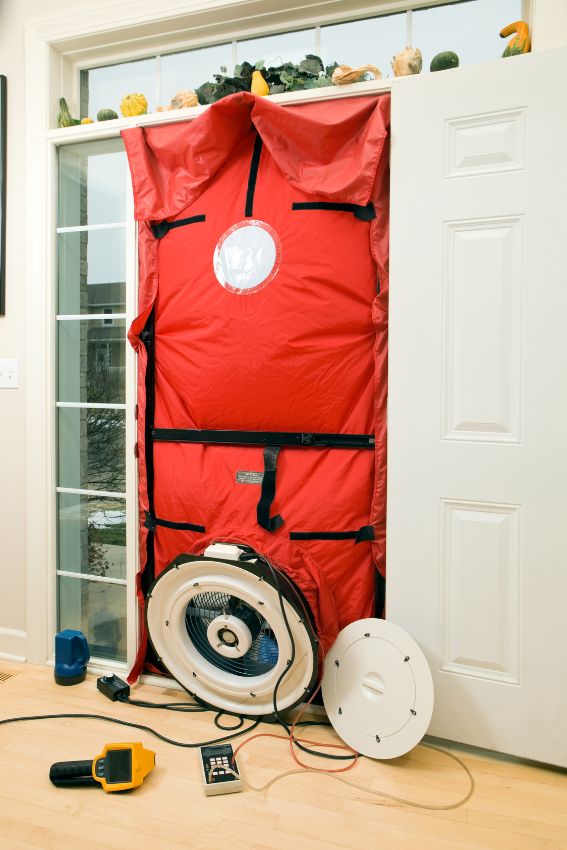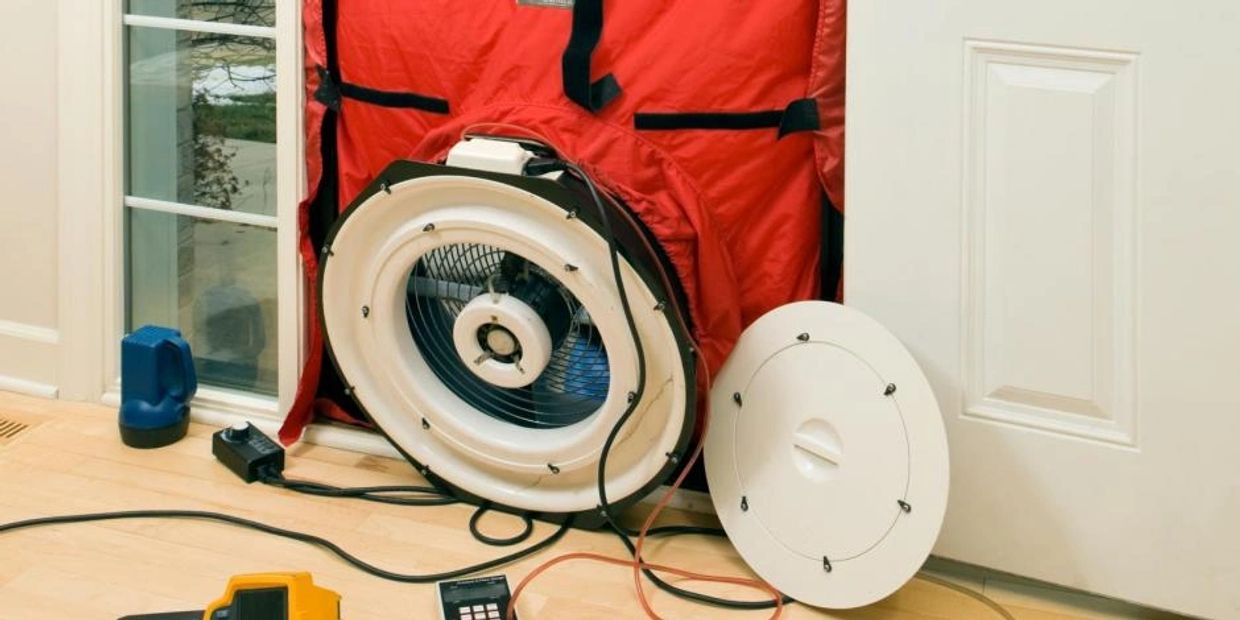Reveal the unseen costs with energy testing south carolina
The Role of Power Testing in Attaining an Airtight Option for Your Home
Energy screening is vital for homeowner looking for to develop a closed setting. It identifies air leaks and inefficiencies that can jeopardize power performance. Typical offenders consist of gaps around doors and home windows. Making use of techniques like blower door examinations and thermal imaging, house owners can gain understandings right into their home's susceptabilities (air tight solutions). Comprehending these findings is essential. What actions should be taken once air leakages are determined? The answers hold the trick to enhanced comfort and cost savings
Recognizing Power Testing and Its Significance
Energy testing plays a crucial role in examining the airtightness of structures and structures. By determining air leak, this method provides essential understandings right into a home's power efficiency, thermal comfort, and overall performance. Airtight buildings lower power intake, guaranteeing that home heating and air conditioning systems run successfully. This screening procedure usually entails strategies such as blower door examinations, which create a controlled setting to recognize unplanned air pathways.Understanding the importance of power screening expands past compliance with structure codes; it cultivates a proactive approach to sustainability. Recognizing air leakages early can result in timely removal, inevitably boosting indoor air high quality and decreasing utility prices. In addition, power screening adds to the durability of building products by decreasing moisture buildup and associated damage. As awareness of environmental impact increases, power screening comes to be an essential device for home builders and home owners going for high-performance buildings.
Typical Sources of Air Leaks in Properties
Recognizing common resources of air leaks is vital for enhancing a home's energy performance. These leaks commonly happen in various locations of a building, substantially influencing home heating and cooling prices. Common perpetrators include voids around doors and windows, where seals might weaken with time. Furthermore, electrical outlets and buttons can create pathways for air exchange if not correctly insulated. Attic rooms and cellars are also regular resources, specifically where wall surfaces fulfill the roof or the foundation. Various other potential leakage factors include pipes infiltrations, airing vent systems, and the areas surrounding smokeshafts. Older residential properties may experience from broken down building products, raising susceptability to air seepage. By acknowledging these common sources, homeowner can take proactive steps to seal leaks, consequently boosting general energy efficiency and convenience within their rooms. Dealing with these problems is an essential part of establishing an airtight service for any type of residential property.
Methods of Power Testing: Blower Door and Thermal Imaging
Effective energy screening techniques, such as blower door tests and thermal imaging, play an important role in diagnosing air leakages within a home. The blower door test involves pressurizing or depressurizing a building to determine air movement and recognize leakages. A calibrated follower is installed in an outside entrance, and the resulting stress difference highlights areas of undesirable air seepage. This method evaluates the total airtightness of the structure.Thermal imaging complements blower door tests by visually finding temperature level variants on surfaces, exposing covert air leaks. Infrared cameras catch warmth loss or gain, permitting accurate identification of issue areas, such as improperly protected walls or voids around home windows and doors. energy testing north carolina. With each other, these approaches offer a complete analysis of a residential or commercial property's energy efficiency, allowing property owners to resolve air leakages effectively and boost total efficiency
Benefits of Identifying Air Leaks
Identifying air leakages provides considerable benefits for energy performance and indoor convenience. By securing these leakages, buildings can decrease energy intake, resulting in reduced utility costs and a lowered carbon impact. In addition, enhanced airtightness adds to a more steady indoor setting, improving general convenience for passengers.
Energy Effectiveness Improvements
Detecting air leaks is crucial for boosting energy efficiency in buildings. Identifying these leaks allows home owners to deal with areas where conditioned air runs away or unconditioned air enters, leading to considerable energy financial savings. By securing splits and voids, buildings can maintain a consistent temperature level, lowering the need on home heating and cooling systems. This not just reduces energy costs however likewise decreases the environmental impact related to boosted energy usage. Furthermore, power effectiveness enhancements contribute to a building's total sustainability, making it an extra eye-catching choice for eco-conscious purchasers or renters. Ultimately, prioritizing air leak discovery and remediation helps maximize energy use, promotes accountable resource monitoring, and supports long-lasting economic advantages for residential or commercial property owners.

Enhanced Indoor Comfort
Dealing with air leaks not just results in power cost savings yet likewise considerably improves indoor comfort. When air leaks are successfully identified and sealed, temperature level regulation within a home ends up being much more reliable. This results in constant interior temperatures, eliminating cold drafts in winter and locations in summer. Improved insulation likewise reduces environmental pollution from outdoors, developing a quieter and more peaceful living atmosphere. In addition, enhanced air top quality is accomplished by decreasing the infiltration of outside toxins, irritants, and humidity, contributing to the overall health of residents. Home owners experience an even more positive atmosphere, cultivating relaxation and performance. Inevitably, recognizing and remedying air leaks is essential for achieving suitable indoor convenience throughout the year.
Exactly How Power Testing Improves Convenience and Indoor Air High Quality
Power screening plays a crucial role in improving temperature regulation within interior spaces, ensuring a consistent and comfortable atmosphere. By determining and sealing air leaks, it also significantly minimizes the infiltration of toxins, thus enhancing interior air high quality. This double impact fosters general wellness for passengers.
Boosted Temperature Guideline
Effective temperature level policy substantially adds to both comfort and indoor air quality, making it a vital emphasis for contemporary structure design. Energy testing plays a vital function in accomplishing this law by determining areas where heat loss or gain occurs, permitting targeted renovations. By ensuring an impermeable building envelope, energy screening assists maintain consistent indoor temperature levels, minimizing the demand for excessive heating or cooling. This stability enhances resident comfort, as variations in temperature level can lead to pain and dissatisfaction. Additionally, reliable temperature level control can boost interior air high quality by minimizing the danger of condensation and mold growth, which flourish in unequal temperature level conditions. Consequently, energy screening is essential for maximizing temperature monitoring in residential and commercial properties.
Lowered Pollutant Infiltration
While numerous elements contribute to interior air quality, reduced toxin infiltration sticks out as a crucial element that power testing can greatly enhance. Energy testing identifies air leaks and weak points in a building's envelope, which may enable outside toxins, irritants, and dampness to go into indoor rooms. By sealing these leaks, homes can efficiently restrict airborne impurities, bring about a healthier environment. Boosted airtightness not just improves comfort but likewise reduces the worry on heating and cooling systems, causing power savings. In addition, reduced toxin seepage cultivates better overall health for residents, as cleaner air advertises respiratory health and reduces allergy signs and symptoms. Power screening plays an essential role in developing both an energy-efficient and health-conscious living area.
The Financial Impact of Power Screening on Energy Costs

Steps to Take After Power Testing Results
Once power screening outcomes are in, property owners ought to meticulously evaluate the searchings for to establish the most effective course onward. The initial step includes identifying the locations that need improvement, such as air leakages or insulation deficiencies. Property owners need to after that focus on fixings based on the seriousness of the concerns and their possible influence on energy efficiency.Next, it is suggested to seek advice from with experts who specialize in power efficiency to devise a explanation comprehensive action plan. This might consist of remedies like sealing voids, adding insulation, or upgrading home windows and doors.After implementing the necessary changes, a follow-up power examination can identify the performance of the fixings. Constant monitoring is also vital to guarantee that the residential or commercial property maintains its impermeable standing with time. By following these steps, homeowners can substantially improve their residential or commercial property's power efficiency, leading to reduced energy expenses and enhanced comfort.
Frequently Asked Questions
Exactly how Typically Should I Conduct Energy Checking on My Building?
The regularity of energy testing should typically be every couple of years, or following substantial remodellings. Regular evaluations help recognize efficiency improvements and assure that the residential property preserves suitable energy efficiency in time, adapting to transforming problems.
Is Energy Testing Necessary for New Constructions?
Power testing is necessary for brand-new building and constructions, as it recognizes potential air leak and insulation concerns - energy testing north carolina. Carrying out these tests guarantees energy efficiency, improves interior comfort, and fulfills building ordinance, inevitably causing lasting cost financial savings
Can I Carry Out Energy Testing Myself?
Energy screening typically needs specialized devices and knowledge. While some home owners might try fundamental evaluations, expert solutions guarantee precise results and reliable recognition of issues, ultimately bring about far better power efficiency and comfort in living areas.
What Is the Price of Specialist Power Screening Providers?
The cost of professional power screening services commonly ranges from $300 to $1,500, depending on home place, complexity, and size. Homeowners ought to consider possible energy cost savings when assessing the financial investment in these solutions.
For How Long Do Energy Screening Results Typically Last?
Energy testing results generally remain legitimate for one to 3 years, depending upon elements like building modifications pop over here and environmental modifications. Regular updates are advised to guarantee accuracy and preserve reliable energy performance requirements. Efficient energy screening approaches, such as blower door tests and thermal imaging, play a vital role in detecting air leaks within a building. Determining these leaks allows property proprietors to address locations where conditioned air leaves or unconditioned air enters, leading to significant energy financial savings. Energy screening recognizes air leakages and weak points in a structure's envelope, which may enable outside toxins, irritants, and moisture to enter indoor spaces. As house owners progressively look for to lower their power expenditures, the duty of energy testing comes to be vital in recognizing leaks and inadequacies. Homeowners must after that focus on fixings based on the severity of the concerns and their potential impact on energy efficiency.Next, it is advisable to seek advice from with specialists that specialize in energy performance to develop a detailed activity strategy.